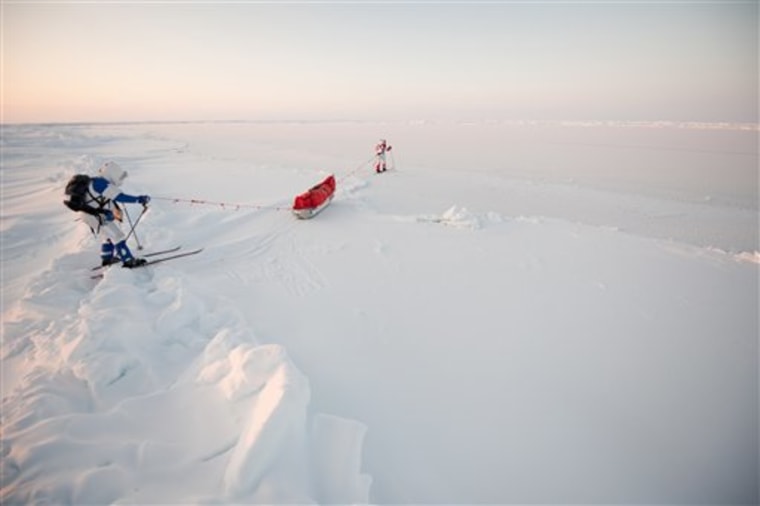British explorers in northern Canada to measure the thickness of floating Arctic sea ice had to end their expedition this week, far short of reaching the North Pole due to an early summer ice melt.
Explorers Pen Hadow, Ann Daniel and photographer Martin Hartley had planned a three-month journey to the North Pole, but ended their arduous trek Wednesday, approximately 304 miles from their destination, said Hadow.
The trio stopped after 73 days, during which they measured the thickness of floating sea ice to provide data to scientists studying the impact of global warming in the region.
"This year, the summer melt came a little early," Hadow said during a Webcast conference from Resolute Bay in northern Canada. "We would have rather reached the Pole if we could have, but we've always regarded (getting there) as the cherry on the cake."
Information the team gathers could contribute to a better understanding of global warming, which is believed to be the main culprit in the rapidly melting polar ice cap that is freeing up new sea routes and untapped mineral resources on the ocean bottom.
Hadow said the group's goal was to cover as much distance as possible and gather as much information as possible.
"Along the way we realized (getting to) the Pole was not achievable so we sacrificed it very easily," he said.
The data will be used to help scientists further understand climate change by getting a better picture of when sea ice in the North Pole will melt completely and not refreeze seasonally.
The trekkers said they captured 16,000 observations and took 1,500 measurements of the thickness and density of the ice and snow by drilling into the striking blue ice.
Mostly thin ice
The group discovered the average thickness of the sea ice was 5 feet.
"This seems to suggest it was almost all first-year ice. Our science advisers had told us to expect thicker, older ice on at least part of the route, so it is something of a mystery where that older ice has gone. It'll be interesting to see what scientists think about this," said Hadow.
He also said there was little snow cover.
Peter Wadhams, a professor of Ocean Physics at the University of Cambridge, said that "the data already sent back shows the team have been traveling on first-year ice and provided an insight into its rate of growth this year."
Wadhams also heads the Polar Ocean Physics Group in the Department of Applied Mathematics and Theoretical Physics at Cambridge.
Hadow said the findings would be presented at a conference on climate change in December in Copenhagen, where alternatives to the Kyoto Protocol environmental treaty.
But for now, the group is happy to be on solid ground after trekking amid treacherous snow conditions and temperatures dropping below minus 94 degrees Fahrenheit with a wind chill.
"It's delightful to be back (on the ground)," said Daniel. "I had the window wide open last night because I got so used to the cold. But I woke up quite often in the night feeling just luxuriated in a bed. And its absolutely wonderful to eat on a plate, with a fork and knife, while sitting on a chair."
